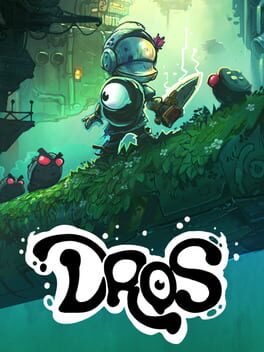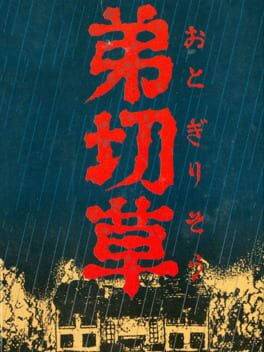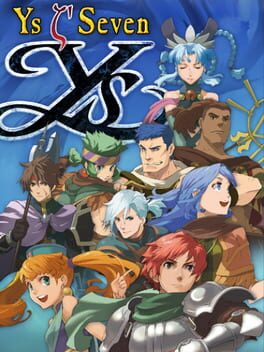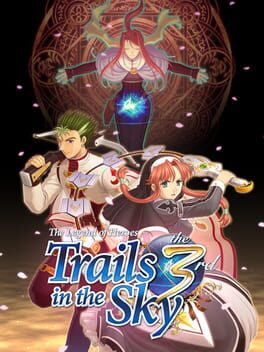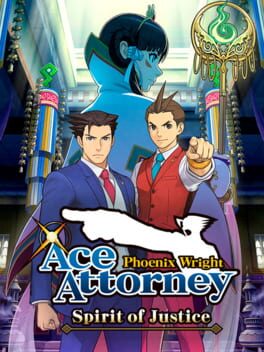PancakeTime
2023
I really want to like this game, and it has a few genuinely clever ideas.
Health pickups doubling as a collectable that you’re rewarded for having a certain amount of at the end of a level creates a unique tension where you don’t want to heal unless you’re above the quota for the level. On top of that, enemies only drop health when you kill them after they lose aggro and run away. This encourages you to be ruthless, and communicates the Dros’ dark fantasy setting brilliantly.
The problem is that the games puzzle design doesn’t evolve much beyond its initial ideas. Every puzzle is a slight variation on sending Little Dros out to an area Captain can’t reach, activating something that lets Captain come through, killing the monsters you had to avoid as Little Dros, then opening another path for Little Dros, rinse and repeat.
When I reached the second world, I was keen to see what new puzzle ideas the game would present me, and the answer was not much. There were new elements like conveyer belts and lava pits, but none of them changed the funadamental puzzle solving enough to avoid it feeling like I was solving the exact same type of puzzles from the first world.
Health pickups doubling as a collectable that you’re rewarded for having a certain amount of at the end of a level creates a unique tension where you don’t want to heal unless you’re above the quota for the level. On top of that, enemies only drop health when you kill them after they lose aggro and run away. This encourages you to be ruthless, and communicates the Dros’ dark fantasy setting brilliantly.
The problem is that the games puzzle design doesn’t evolve much beyond its initial ideas. Every puzzle is a slight variation on sending Little Dros out to an area Captain can’t reach, activating something that lets Captain come through, killing the monsters you had to avoid as Little Dros, then opening another path for Little Dros, rinse and repeat.
When I reached the second world, I was keen to see what new puzzle ideas the game would present me, and the answer was not much. There were new elements like conveyer belts and lava pits, but none of them changed the funadamental puzzle solving enough to avoid it feeling like I was solving the exact same type of puzzles from the first world.
1992
Schlocky but fun haunted house story that punches above its weight with limited visuals and stellar sound design. I felt the tension and spookiness hard the first couple of times, but successive playthroughs unlock goofier dialogue options that kinda highlight just how little most of the choices matter. Hard to tell how many choices actually determine your route/ending without any English guides at time of writing, but most of them seem to only exist for the player to RP as the protagonist. That’s fine on its own, but quite a few dialogue options didn’t even get a unique response from the game/characters in the moment.
I get why it’s considered a classic, and I’m really glad I played it, even if it didn’t blow me away. Definitely worth a look for its historical value if you love the genre. I can see the influence it had on so many other VN’s I love.
I get why it’s considered a classic, and I’m really glad I played it, even if it didn’t blow me away. Definitely worth a look for its historical value if you love the genre. I can see the influence it had on so many other VN’s I love.
2024
2009
Playing this after Ys Oath in Felghana and Ys Origin kinda gave me whiplash in how differently they’re designed.
Origins and Felghana both had tight combat and no ability to heal during battle that made every boss fight a tense struggle to learn attack patterns and conserve your health long enough to take out the boss. But Seven is mostly a game about spamming the attack button until you have enough SP to spam the skill button, and chugging a few potions to shrug off whatever damage you take. There’s no incentive to learn attack patterns and play well, because the game puts up practically no resistance to stop you from mashing your way through every encounter. I died to almost every boss at least once in Felghana/Origins, but I got exactly one Game Over in Seven, and it was from trying to fight an optional endgame boss too early.
Despite this, I did warm up to the game over time. It has a pleasant sort of junk food quality to it where the combat and exploration are competent enough to keep you engaged between story beats. It’s not going to blow anyone’s mind, and I’m still disappointed it doesn’t follow in the steps of previous Ys titles, but you could certainly do worse.
Origins and Felghana both had tight combat and no ability to heal during battle that made every boss fight a tense struggle to learn attack patterns and conserve your health long enough to take out the boss. But Seven is mostly a game about spamming the attack button until you have enough SP to spam the skill button, and chugging a few potions to shrug off whatever damage you take. There’s no incentive to learn attack patterns and play well, because the game puts up practically no resistance to stop you from mashing your way through every encounter. I died to almost every boss at least once in Felghana/Origins, but I got exactly one Game Over in Seven, and it was from trying to fight an optional endgame boss too early.
Despite this, I did warm up to the game over time. It has a pleasant sort of junk food quality to it where the combat and exploration are competent enough to keep you engaged between story beats. It’s not going to blow anyone’s mind, and I’m still disappointed it doesn’t follow in the steps of previous Ys titles, but you could certainly do worse.
A non-linear adventure game with a satisfying mystery box story to unravel, and beautiful 2D art style. A must play for fans of sci-fi fiction and visual novels or Japanese adventure games.
To say much about the story is risking spoilers, but it takes inspiration from many pieces of famous sci-fi fiction and anime, and turns them into something greater than the sum of its parts. The 13 playable characters each have their own story sections which interconnect, and the player is given a lot of freedom to play them in (almost) any order they wish, picking at whatever narrative threads interest them until the game locks you out of certain chapters by pushing you to progress further in other characters stories, or the combat sections, to help lightly guide your progress. This means that aside from a few specifically locked off twists, players can uncover different story elements at different times, giving each player a unique experience in uncovering the greater mysteries at play.
Each of the protagonists have their own distinct personality, so even if you don't like some of them, you're likely to find at least a few you care about, even if you're forced to occasionally play as less interesting characters to progress.
The only downside to 13 Sentinels is its mediocre RTS combat sections that trade the visual flare of the story segments for a bland, abstracted strategy view that doesn't convey the scale and power the mechs have in the rest of the game at all, but they're at least unobtrusive if you set the difficulty to easy.
To say much about the story is risking spoilers, but it takes inspiration from many pieces of famous sci-fi fiction and anime, and turns them into something greater than the sum of its parts. The 13 playable characters each have their own story sections which interconnect, and the player is given a lot of freedom to play them in (almost) any order they wish, picking at whatever narrative threads interest them until the game locks you out of certain chapters by pushing you to progress further in other characters stories, or the combat sections, to help lightly guide your progress. This means that aside from a few specifically locked off twists, players can uncover different story elements at different times, giving each player a unique experience in uncovering the greater mysteries at play.
Each of the protagonists have their own distinct personality, so even if you don't like some of them, you're likely to find at least a few you care about, even if you're forced to occasionally play as less interesting characters to progress.
The only downside to 13 Sentinels is its mediocre RTS combat sections that trade the visual flare of the story segments for a bland, abstracted strategy view that doesn't convey the scale and power the mechs have in the rest of the game at all, but they're at least unobtrusive if you set the difficulty to easy.
2014
Half of Robotics;Notes is a slice of life story about teenagers on a rural island messing around at their school club where they're trying to accomplish the monumental task of building a working giant robot, and the other half is a conspiracy thriller about a shadowy organisation supposedly trying to kill billions of people.
Whether or not this story works for you is likely going to come down to how well you think these two halves mesh together, and while they're an odd combination, I think there's something special in the result.
You might have guessed from the title that this is a story in the Japanese mecha genre, but I'd argue it's more about mecha fandom than mecha itself. Every character has their own relationship to giant robots that is explored in detail, from heroine Akiho growing up on Super Robot anime, to rival Subaru's fascination with the Real Robot side of things, or shy martial artist Jun's fear of robots based on a traumatic childhood incident, and they each inform the casts perspective on mecha in unique ways as they come together to make a giant robot.
Something that makes Robotics;Notes different is in its structure. Whereas most visual novels either have a single route or multiple diverging routes with different endings, Robotics;Notes has multiple character endings that follow on directly from one another instead of being different branching routes. While this does mean the player can accidentally play these endings out of order and mess with the flow of the story, I think this approach creates a more cohesive narrative overall, as by the time you reach the true ending, most members of the robotics club have gone through their own character development and resolved their character arcs in a single timeline, instead of it happening in a different narrative branch that might not occur on the path to a true ending.
While almost every character gets their time to shine, there is one character who unfortunately misses out, as all the character endings only revolve around the female cast. This means that Subaru, who in my opinion is one of the more interesting characters, doesn't get a completely satisfying character arc until the inferior sequel, Robotics;Notes DaSH.
Graphics wise, Robotics;Notes is somewhat unique among visual novels in that it opts to use 3D models instead of 2D portraits or the more recent Live-2D animations. The 3D models look quite good, and animate well, making for a more dynamic look than static 2D images, but it does leave the game feeling like it has a lack of a distinct art style compared to its cousin Steins;Gate, which had beautifully drawn 2D portraits with a unique look to them. You still see the characters in 2D during CG's, but they have a fairly generic look in order to match their 3D models. In addition, presumably because the 3D models were more expensive or took longer to produce, only a small handful of characters outside of the main cast can appear outside of CG scenes, meaning often the main cast will be talking to thin air as the game couldn't justify giving a 3D model to more minor characters like the protagonist Kaito's parents, where I think they likely would have had at least one portrait drawn for their appearances in a 2D visual novel.
Overall, Robotics;Notes is a very slow paced story, both in its laid back slice of life half, and it's slow burn conspiracy thriller half, but I think that only enhances both sides of this unique pairing. The slice of life elements benefit from a pacing that allows the player plenty of time to get attached to these characters, and helps convey the stillness of rural life on the island of Tanegashima, while the conspiracy thriller elements are enhanced by the background sense of dread that bigger forces are at play behind the scenes, and our protagonist could be silenced at any time for what he has discovered. It also means that whenever a big plot development does happen, it feels monumental in comparison to the relaxed daily life the characters experience. I wouldn't blame anyone for not being on board with its pacing, but I think if you stick with it, it's ultimately a rewarding experience.
Whether or not this story works for you is likely going to come down to how well you think these two halves mesh together, and while they're an odd combination, I think there's something special in the result.
You might have guessed from the title that this is a story in the Japanese mecha genre, but I'd argue it's more about mecha fandom than mecha itself. Every character has their own relationship to giant robots that is explored in detail, from heroine Akiho growing up on Super Robot anime, to rival Subaru's fascination with the Real Robot side of things, or shy martial artist Jun's fear of robots based on a traumatic childhood incident, and they each inform the casts perspective on mecha in unique ways as they come together to make a giant robot.
Something that makes Robotics;Notes different is in its structure. Whereas most visual novels either have a single route or multiple diverging routes with different endings, Robotics;Notes has multiple character endings that follow on directly from one another instead of being different branching routes. While this does mean the player can accidentally play these endings out of order and mess with the flow of the story, I think this approach creates a more cohesive narrative overall, as by the time you reach the true ending, most members of the robotics club have gone through their own character development and resolved their character arcs in a single timeline, instead of it happening in a different narrative branch that might not occur on the path to a true ending.
While almost every character gets their time to shine, there is one character who unfortunately misses out, as all the character endings only revolve around the female cast. This means that Subaru, who in my opinion is one of the more interesting characters, doesn't get a completely satisfying character arc until the inferior sequel, Robotics;Notes DaSH.
Graphics wise, Robotics;Notes is somewhat unique among visual novels in that it opts to use 3D models instead of 2D portraits or the more recent Live-2D animations. The 3D models look quite good, and animate well, making for a more dynamic look than static 2D images, but it does leave the game feeling like it has a lack of a distinct art style compared to its cousin Steins;Gate, which had beautifully drawn 2D portraits with a unique look to them. You still see the characters in 2D during CG's, but they have a fairly generic look in order to match their 3D models. In addition, presumably because the 3D models were more expensive or took longer to produce, only a small handful of characters outside of the main cast can appear outside of CG scenes, meaning often the main cast will be talking to thin air as the game couldn't justify giving a 3D model to more minor characters like the protagonist Kaito's parents, where I think they likely would have had at least one portrait drawn for their appearances in a 2D visual novel.
Overall, Robotics;Notes is a very slow paced story, both in its laid back slice of life half, and it's slow burn conspiracy thriller half, but I think that only enhances both sides of this unique pairing. The slice of life elements benefit from a pacing that allows the player plenty of time to get attached to these characters, and helps convey the stillness of rural life on the island of Tanegashima, while the conspiracy thriller elements are enhanced by the background sense of dread that bigger forces are at play behind the scenes, and our protagonist could be silenced at any time for what he has discovered. It also means that whenever a big plot development does happen, it feels monumental in comparison to the relaxed daily life the characters experience. I wouldn't blame anyone for not being on board with its pacing, but I think if you stick with it, it's ultimately a rewarding experience.
The Ace Attorney series has been a mixed bag post-Trials & Tribulations as Capcom attempts to extend the life of a franchise that hit its peak in quality and emotional resolution with its third game, but Spirit of Justice is certainly the best of the second trilogy of games.
The alternating chapter structure swapping between Phoenix visiting Maya in the country of Khura'in, and Apollo back home in "America" keeps things from getting stale, and the way their two stories connect in the latter half endeared me far more to Apollo Justice's character than the game actually named after him ever managed to do.
While the quality of the individual mysteries still never quite reaches the heights of the original trilogy, the series charming writing and character animations are still operating in full force. A character from the first case had me constantly laughing with their specific gimmick while giving testimony, and might be one of my new favourite one off characters in the whole series. It's also a joy to finally see Maya Fey return to the series after being absent for the past two games.
Spirit of Justice adds a new gameplay mechanic with Khura'in's "Divination Séance's," which replay the sights and sounds experienced by a victim in their final moments. There are a few fun twists when it comes to interpreting what at first looks to be damning evidence, but it's concerning that Ace Attorney feels the need to constantly add a gimmick to every new release, and on top of Apollo's tell detecting bracelet and Athena's mood matrix AI from the last two games, it feels like the courtroom is being crowded with flashy new mechanics instead of refining the core mystery writing that makes the series so special.
But my biggest criticism of Spirit of Justice is the criminal underuse of Athena. After being established as a strong addition to the series cast in Dual Destinies I was looking forward to seeing more of her, but Spirit of Justice is far more interested in exploring Apollo's character, leading to her taking a backseat, and only taking the lead in one short courtroom only case.
Even if the Ace Attorney series is past its prime, I'm still on board with the franchise and keen to see where Phoenix, Apollo, and Athena's stories go next if it can maintain at least this level of quality.
The alternating chapter structure swapping between Phoenix visiting Maya in the country of Khura'in, and Apollo back home in "America" keeps things from getting stale, and the way their two stories connect in the latter half endeared me far more to Apollo Justice's character than the game actually named after him ever managed to do.
While the quality of the individual mysteries still never quite reaches the heights of the original trilogy, the series charming writing and character animations are still operating in full force. A character from the first case had me constantly laughing with their specific gimmick while giving testimony, and might be one of my new favourite one off characters in the whole series. It's also a joy to finally see Maya Fey return to the series after being absent for the past two games.
Spirit of Justice adds a new gameplay mechanic with Khura'in's "Divination Séance's," which replay the sights and sounds experienced by a victim in their final moments. There are a few fun twists when it comes to interpreting what at first looks to be damning evidence, but it's concerning that Ace Attorney feels the need to constantly add a gimmick to every new release, and on top of Apollo's tell detecting bracelet and Athena's mood matrix AI from the last two games, it feels like the courtroom is being crowded with flashy new mechanics instead of refining the core mystery writing that makes the series so special.
But my biggest criticism of Spirit of Justice is the criminal underuse of Athena. After being established as a strong addition to the series cast in Dual Destinies I was looking forward to seeing more of her, but Spirit of Justice is far more interested in exploring Apollo's character, leading to her taking a backseat, and only taking the lead in one short courtroom only case.
Even if the Ace Attorney series is past its prime, I'm still on board with the franchise and keen to see where Phoenix, Apollo, and Athena's stories go next if it can maintain at least this level of quality.
